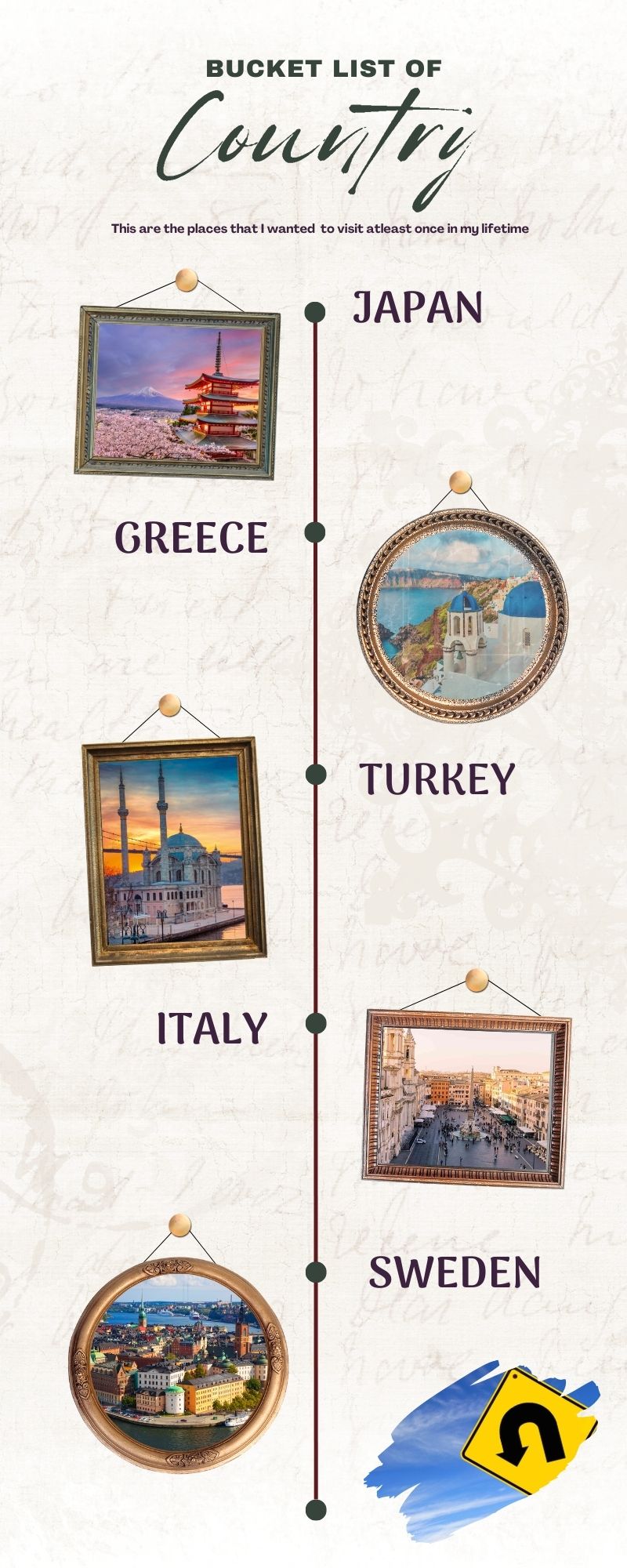


Kyoto (京都, Kyōto) served as Japan's capital and the emperor's residence from 794 until 1868. It is one of the country's ten largest cities with a population of 1.5 million people and a modern face. Over the centuries, Kyoto was destroyed by many wars and fires, but due to its exceptional historic value, the city was dropped from the list of target cities for the atomic bomb and escaped destruction during World War II. Countless temples, shrines and other historically priceless structures survive in the city today.
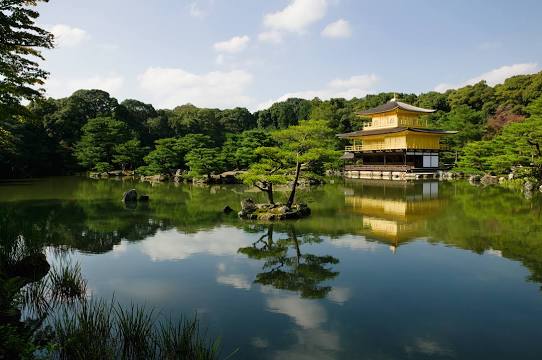
Fushimi Inari Shrine (伏見稲荷大社, Fushimi Inari Taisha) is an important Shinto shrine in southern Kyoto. It is famous for its thousands of vermilion torii gates, which straddle a network of trails behind its main buildings. The trails lead into the wooded forest of the sacred Mount Inari, which stands at 233 meters and belongs to the shrine grounds. Fushimi Inari is the most important of several thousands of shrines dedicated to Inari, the Shinto god of rice. Foxes are thought to be Inari's messengers, resulting in many fox statues across the shrine grounds. Fushimi Inari Shrine has ancient origins, predating the capital's move to Kyoto in 794.
Kinkakuji (金閣寺, Golden Pavilion) is a Zen temple in northern Kyoto whose top two floors are completely covered in gold leaf. Formally known as Rokuonji, the temple was the retirement villa of the shogun Ashikaga Yoshimitsu, and according to his will it became a Zen temple of the Rinzai sect after his death in 1408. Kinkakuji was the inspiration for the similarly named Ginkakuji (Silver Pavilion), built by Yoshimitsu's grandson, Ashikaga Yoshimasa, on the other side of the city a few decades later. Kinkakuji is an impressive structure built overlooking a large pond, and is the only building left of Yoshimitsu's former retirement complex. It has burned down numerous times throughout its history including twice during the Onin War, a civil war that destroyed much of Kyoto; and once again more recently in 1950 when it was set on fire by a fanatic monk. The present structure was rebuilt in 1955.
.jpg)
The Acropolis towers over the ageless city of Athens like an enduring beacon of beauty and history. Get lost in the magnificent maze of ancient ruins–the grand Propylaea Gate, Odeon of Herodes Atticus, and Temple of Athena Nike. Join a guided tour to gain more insights into the archaeological sites, especially the Parthenon representing the pinnacle of classical Greek architecture. The Acropolis is always busy so start your exploration early in the morning or late afternoon to avoid crowds. Combine your tour of the ancient site with a visit to the outstanding Acropolis Museum.
.jpg)
Santorini is one of the most beautiful islands of the Cyclades. From the crescent-shaped caldera to the picturesque villages Fira and Oia studded with white-washed houses, Santorini is stunning from any angle. Spend a few idyllic days enjoying the island’s archaeological sites in Akrotiri, and the unique Red beach and black sand Perissa beach. Experience a different side of Santorini by visiting the island’s excellent wineries and vineyards or hopping on a sunset cruise. Santorini is famed for its spectacular sunsets so check out our guide for the best spots to view the Santorini sunset. The island is packed during the peak season so book your ferry or plane tickets early. Here are more tips about the best time to visit Santorini.

With its sun-kissed coastlines and dramatic cliffs, Crete makes for an unforgettable Mediterranean vacation. The largest Greek island boasts the impressive Palace of Knossos and other important Minoan archaeological sites. Relax on the pristine, pink-sand Elafonissi beach, one of the most beautiful beaches in Greece. For a hassle-free holiday, sign up for a full-day tour to explore the island’s well-preserved port cities like Chania and Heraklion. Crete’s popular Samaria Gorge National Park welcomes you with steep ravines, waterfalls, and rich flora and fauna. The best time to visit Crete is in May when flowers paint the island’s landscape with radiant hues.
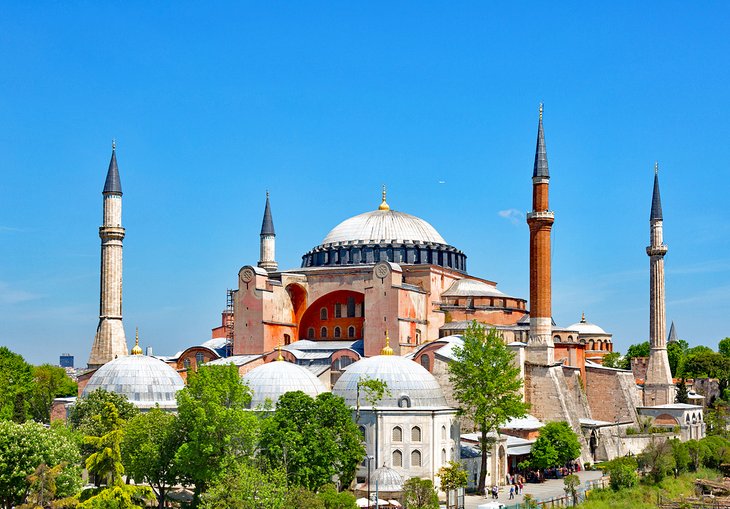
Renowned as one of the most beautiful buildings in the world, the spellbinding Byzantine glory of the Hagia Sophia Mosque (Aya Sofya) is not only one of the top things to do in Istanbul, but also in Turkey. Built by the Byzantine Emperor Justinian in 537 CE, it is renowned as the Byzantine Empire's greatest architectural achievement and has remained the world's largest church for 1,000 years. The staggering bulk of its exterior is rimmed by the delicate minarets added after the Ottoman conquest, while the sumptuous and cavernous frescoed interior is a grand reminder of old Constantinople's might and power. This famed monument is a must-do for every tourist visiting the country.
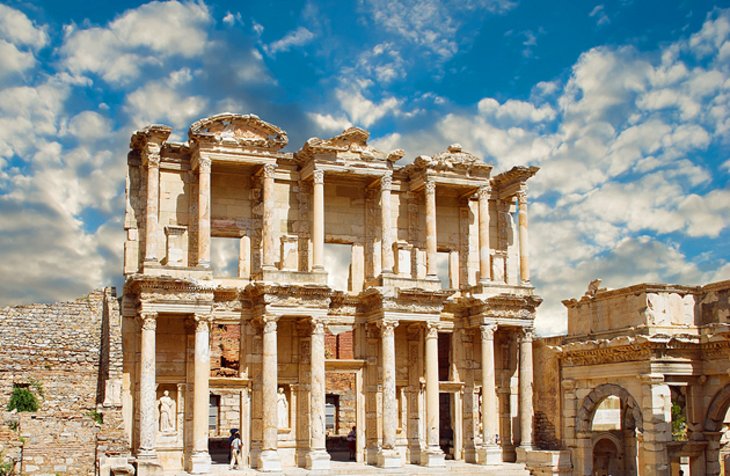
Not to be missed, the mighty ruin of Ephesus is a city of colossal monuments and marble-columned roads. One of the most complete, still-standing famed cities of antiquity in the Mediterranean region, this is the place to experience what life must have been like during the golden age of the Roman Empire. The city's history dates back to the 10th century BCE, but the major monuments you see today all date from its Roman era when it was a thriving commercial center. In particular, the Library of Celsus, the complex of frescoed terraced houses, and the Great Theater all point to the wealth and importance of Ephesus during the Roman period. A sightseeing trip here will take at least half a day to cover the major highlights and longer, if you really want to explore, so make sure you plan your visit so you don't feel rushed.
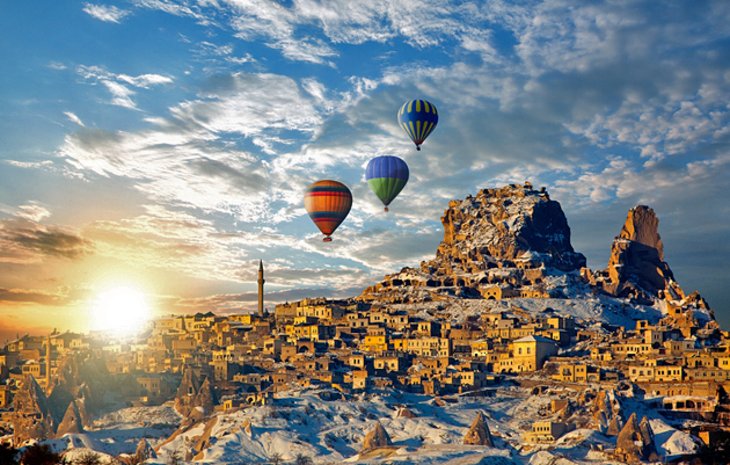
The surreal, swooping rock valleys of Cappadocia are every photographer's dream. Cliff ridges and hill crests are home to rippling panoramas of wave-like rock or wacky-shaped pinnacles that have been formed by millennia of wind and water action. And if you don't feel like hiking for the views, this is one of the world's top destinations to take a hot-air balloon ride. Nestled in this unique lunar-like landscape are the frescoed rock-cut churches and cave-cut architecture of the Byzantine Era, when this area was home to monastic Christian communities. In particular, the multiple cave-churches of Göreme Open-Air Museum and Ihlara Valley are home to some of the best examples of surviving mid-Byzantine-era religious art in the world. Cappadocia's villages, half hewn into the hillsides, where travelers base themselves to explore the surrounding countryside, are also an attraction in themselves, with their boutique hotels that allow you to bed down in a cave with full contemporary comforts.
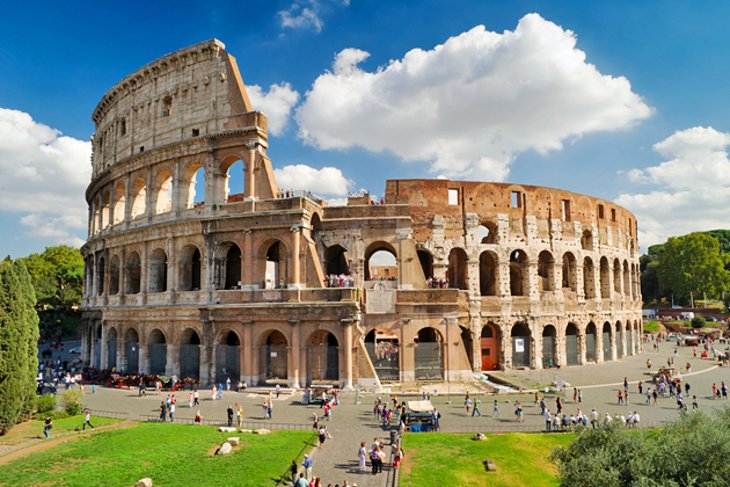
This huge amphitheater, the largest of its kind ever built by the Roman Empire and the largest of their constructions to survive, remained a model for sports facilities right up to modern times. Built by Vespasian in 72 CE and enlarged by the addition of a fourth story by his son, Titus, it was a venue for public spectacles and shows - even mock sea battles. A wooden floor that was 83 by 48 meters covered two additional underground stories with tunnels, rooms, cells, and passages that provided space for gladiators, workers, wild animals, and storage. Today, the structure stands in stark contrast to the modern development that surrounds it and is a prominent reminder of ancient times and the extensive history of Rome.
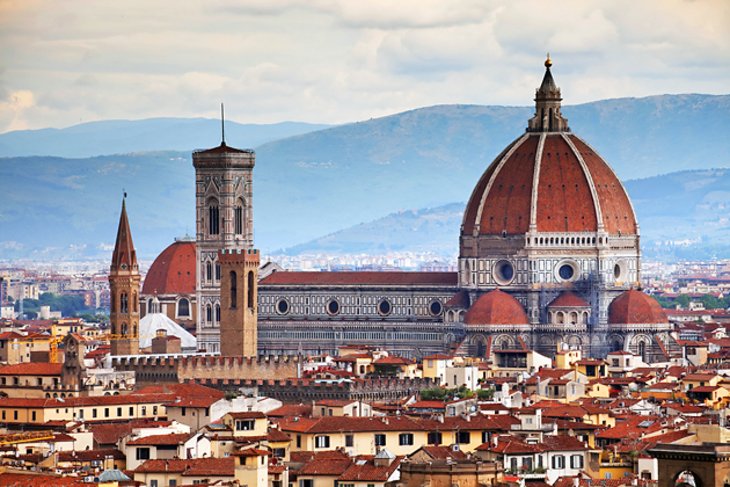
Regarded as one of the finest cathedrals in the world, the Duomo Santa Maria del Fiore, or the Cathedral of Santa Maria del Fiore, dominates the Florence skyline. The cathedral was built between the 13th and 15th centuries, with the most famous piece being the extraordinary dome, completed by Filippo Brunelleschi in 1434. The cathedral's bell tower stands close beside the cathedral in Piazza del Duomo, covered in the same patterned marble typical of Tuscan Romanesque architecture. Designed by Giotto, the campanile stands 82 meters tall, and you can climb the 414 steps up to a viewing platform with fantastic views of the city and the dome. Opposite the Duomo is a magnificent baptistery, famed for its bronze paneled doors by Lorenzo Ghiberti. To see the original, exquisitely crafted panels, which have been replaced by exact replicas to protect the originals from weathering, visit the Museo dell'Opera del Duomo, the cathedral museum.

A gondola ride through the canals of Venice is a tradition that travelers have been enjoying for centuries. Venice is a city of islands, and the canals have long been the city's main streets, connected by a labyrinth of narrow passageways. The Grand Canal is the largest and most famous of these waterways, cutting a wide S-shaped route through the city. Along its sides are the grandest of the palaces once owned by the wealthiest and most powerful families of the Venetian Republic. The best way to see many of the grand palaces, whose fronts face the water, is from a Vaporetto ride along the Grand Canal. Be sure your gondola ride - and your sightseeing explorations on foot - include some of the more atmospheric smaller canals, lined by old buildings that have remained relatively unchanged for hundreds of years.
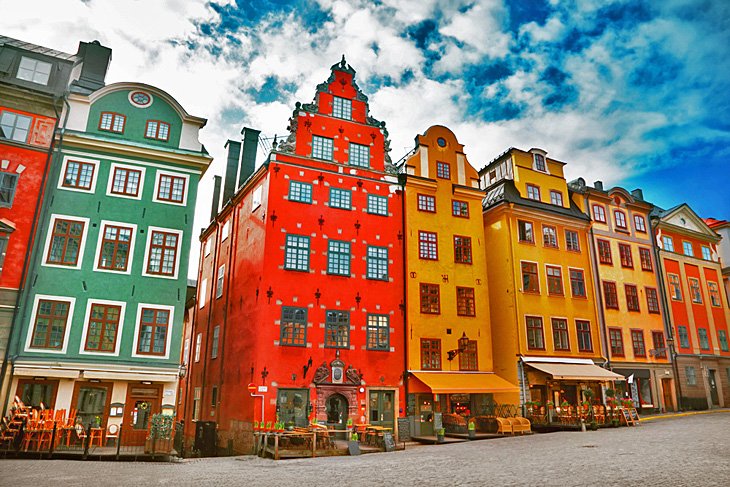
Stockholm's Old Town, known as Gamla Stan, is a small concentrated area where the city began in the middle of the 13th century. Much of the medieval enclave remains, although in typical Scandinavian style, it is freshly brushed and painted regularly. Its charm is in the architecture along its narrow stone-paved lanes and cobbled streets around its squares, especially the main one, Stortorget, surrounded by old merchants' houses. In this neighborhood, along with plenty of shops, restaurants, and cafés, you'll find the Nobel Museum, the Post Museum, the Royal Coin Cabinet, and several churches. It's also a good area to stay if you can find suitable accommodations, with options including luxury boutique hotels, guesthouses, and even affordable inns and hostels.
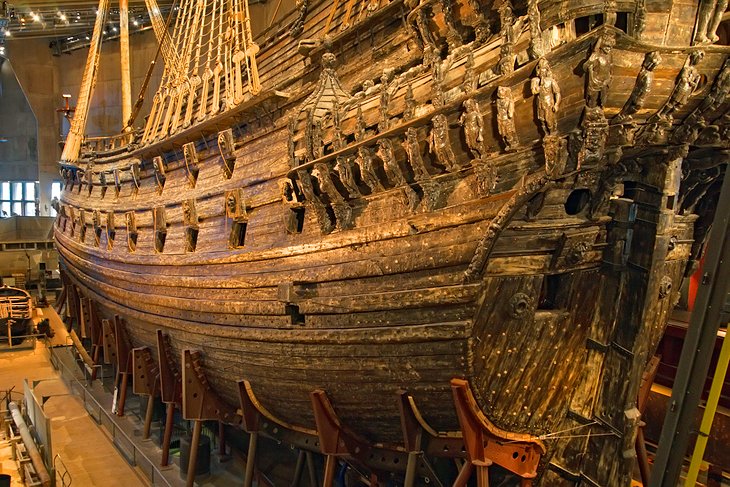
The Vasa Museum (Vasamuseet) in Stockholm is Sweden's most popular museum and now attracts around a million visitors annually. More than 20 million people have visited since the museum opened in 1990, and it's not hard to see why. In 1628, the pride of the Swedish Imperial fleet, the 64-gun warship Vasa, sank on its maiden voyage. The ship lay below the icy waters for more than three centuries until, in 1961, an incredibly ambitious salvage operation took place. Now, visitors from across the world come to see this fascinating time capsule. The museum caters to tourists of all nationalities, and English language guided tours and audioguides are available. A visit to the Vasa, which houses 10 separate exhibitions and a further four museum ships, is a day out in itself. A shop and a restaurant are located on the site for those wanting to make a full day of it. Another Stockholm museum worth visiting is Fotografiska, an innovative gallery of changing exhibits celebrating the art of photography. It is also known for its entertainment venue and restaurant, which features sustainably grown organic produce.
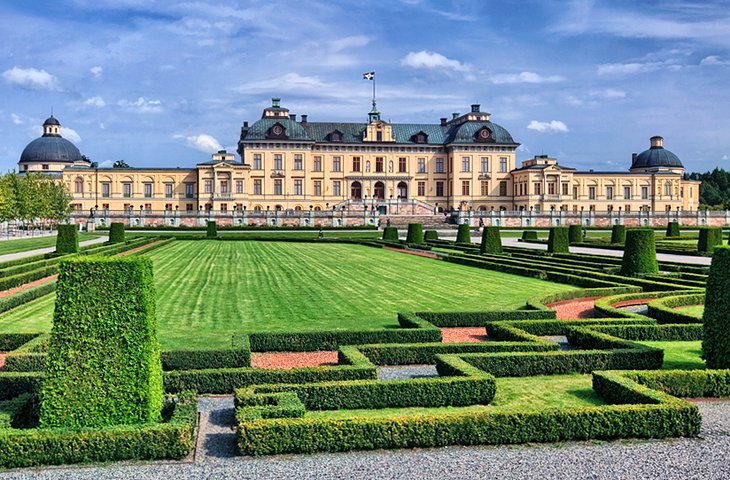
Fairy-tale Drottningholm Palace (Drottningholms slott), on the island of Lovö, is a UNESCO World Heritage Site. It lies about 11 kilometers west of Stockholm city center (45 minutes by ferry), making it an excellent day trip from the capital city. Dating from the 17th century, the palace is now the official residence of the Swedish Royal Family. In the picturesque terraced park are bronze sculptures from Bohemia and Denmark, brought back as trophies of war. Be sure to take in the Chinese Pavilion, which dates from the late 1700s. The 18th-century Palace Theatre (Drottningholms Slottsteater) is still used for performances during the summer months. In the Theatre Museum, you can see period stage costumes and stage scenery. Guided tours are available (in English), and a variety of fun programs and workshops are available for kids and adults alike.